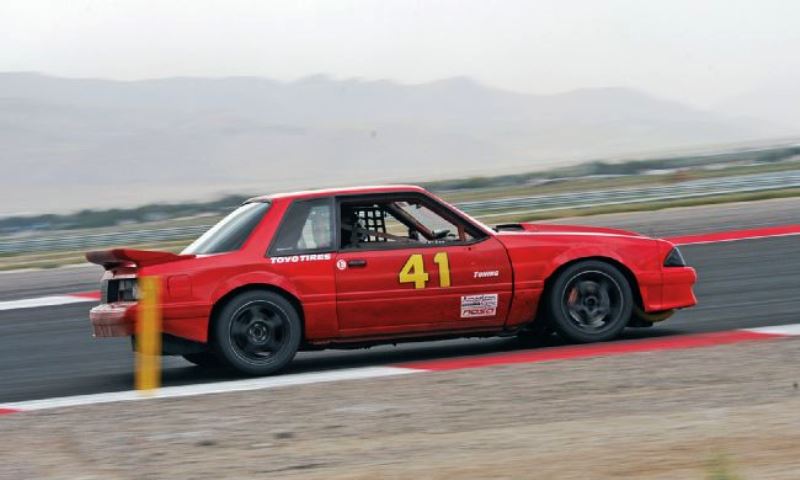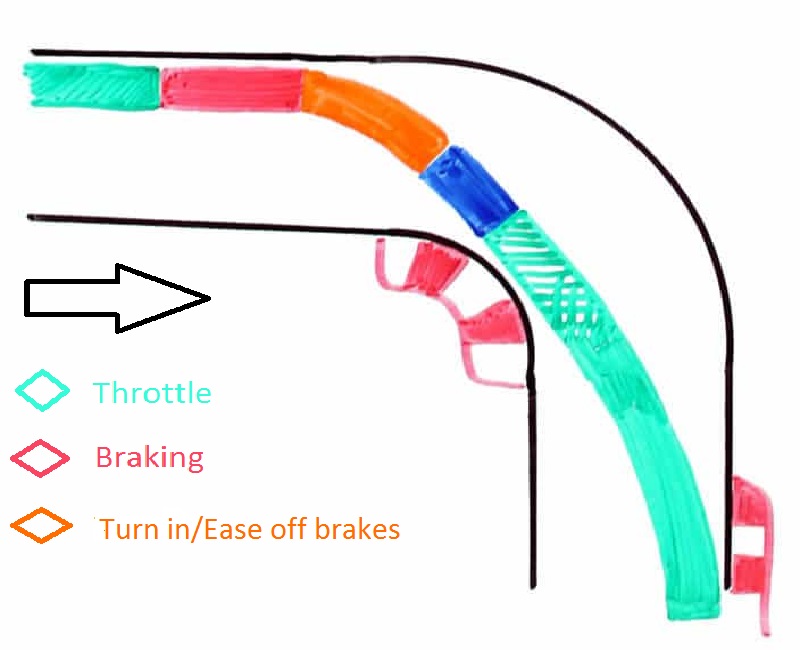Advanced Driving Techniques: How and Why to Trail-Brake
Trailing off the brakes as you turn in can cut seconds from your laps.
When most Mustang fans say they’re going to take their car to the track, they mean the drag strip. And let’s face it, there’s no need for trail braking there. No one is timing how quick you can take a turn and get back on the throttle.

Trail braking is a technique used mostly in road racing, and by really fast drivers on winding roads. It allows you to get through tighter corners faster by braking more. In trail braking, you get on the brakes hard like you normally would. But instead of releasing them completely, trail off of the brakes as you’re turning into the apex of the corner; hence the name.
If you’re like most amateur drivers, you think the key to being fast is to use the brakes as little as possible. Or maybe all at once, so you can right get back on the throttle. In many corners, that’s exactly how to use them. But braking not only slows the car down, it also transfers weight to the front of the car.
Once you get comfortable on a track and learn the corners, you can use this weight transfer technique to shave seconds off your lap times by dynamically adjusting the balance of the car with the brake pedal.
ALSO SEE: Fox Body Mustang Is the Perfect First Drag Build
If we use a typical Fox Mustang as an example, we can visualize this a little easier. A 5.0 liter Fox is a nose-heavy beast that’s prone to understeering, or plowing, due to the amount of weight on its nose. Experienced drivers balance this with a generous application of throttle. It makes the car oversteer as the rear end starts to come around.
The same sort of thing can be done by trail braking and (counter-intuitively) putting more weight on the nose. This increases the amount of grip up front. In turn, it increases the amount of force the wheels use to change the car’s direction.
As an added bonus, the rear of the car is already light. Therefore, it’s more likely to rotate through a corner even without the throttle. As you get off the brakes completely, more weight transfers to the rear, where it can be used for acceleration as you get on the gas coming out of the corner. The Fox Mustang and SN-95 both have a chassis that’s easily upset if your inputs aren’t smooth. Trail braking is an important aspect of that. Jumping on and off the brakes all at once is like pounding the back of the ketchup bottle: The shock can get things moving suddenly. And sometimes, it makes a mess.

The chart above comes from Driver61, which has plenty of videos and educational posts to help make you faster. The video at the top was more dramatic, but this video explains things a little bit better. Plus, the narrator has a British accent. That always makes people sound smarter.
